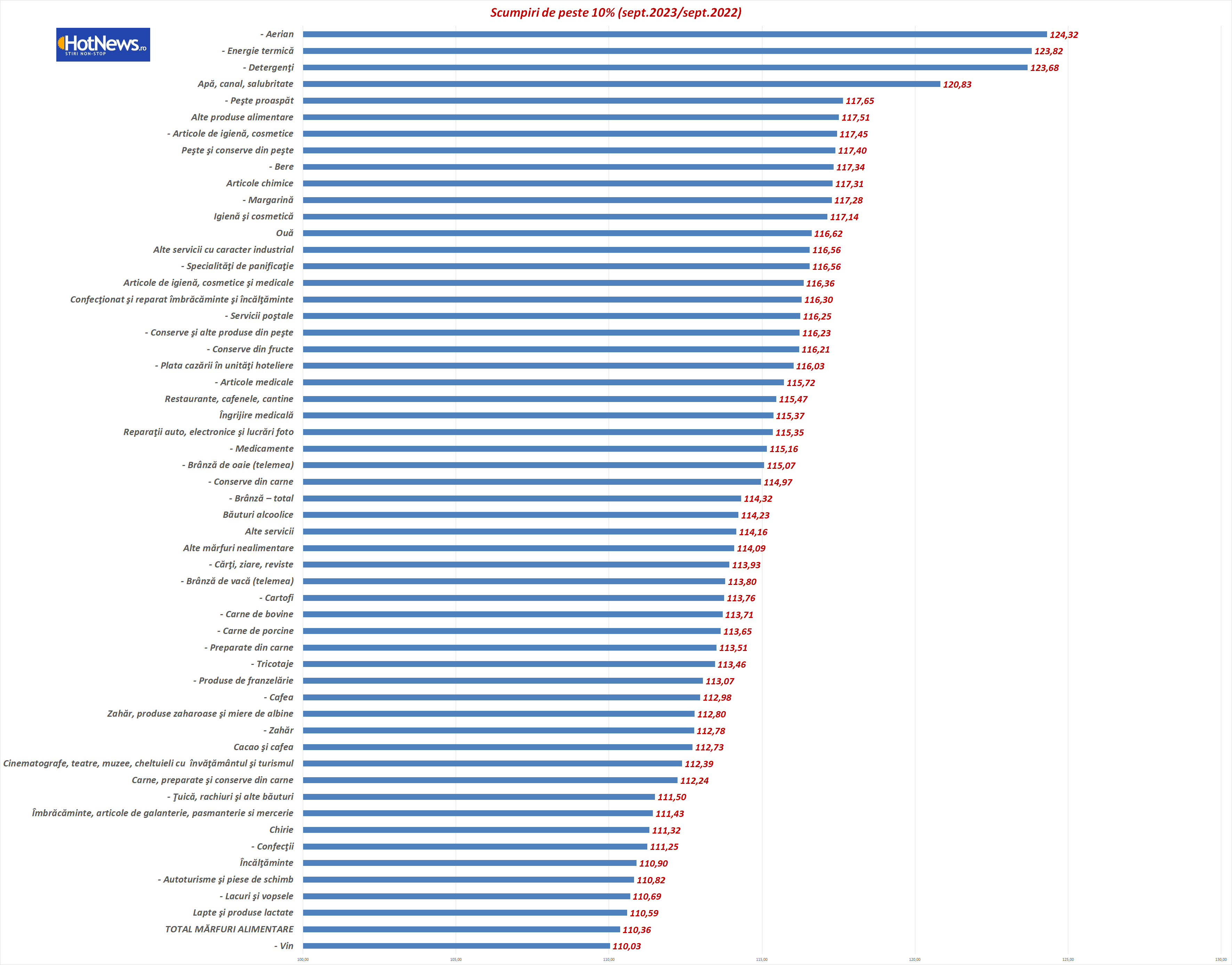
The greatest pressure on budgets in September was caused by the costs of thermal energy, detergents and water, according to data sent on Thursday by Statistics. The next places in the price list were hygiene products and food products.
Even if inflation has fallen, the population doesn’t feel it until most of the daily shopping basket shows rising prices.
Milk, bread, coffee, eggs and meat – products that are often used in households, rose in price by more than 10%

It should be noted that a decrease in inflation does not mean a drop in prices, but only a slowdown in their growth rates.
Such growth rates of food prices have not been seen for 20 years, since 2002-2003.
Inflation will reach 7.5% by the end of the current year, before falling to 4.4% in December 2024 and to 3.8% in June 2025, the BNR explained in its latest Inflation Report.
At the same time, Central Bank economists say, inflation expectations are on a downward trajectory, but with values that remain above the target range.
Significant pressure on prices in 2023 will come from the prices of imported goods.
Read also:Inflation can only be seen in scale / Where Romania imports inflation and where it exports
Source: Hot News
Lori Barajas is an accomplished journalist, known for her insightful and thought-provoking writing on economy. She currently works as a writer at 247 news reel. With a passion for understanding the economy, Lori’s writing delves deep into the financial issues that matter most, providing readers with a unique perspective on current events.